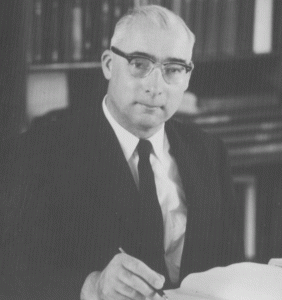STOY, Richard Hugh [Dr] [CBE] [F.R.S.S.Af.]
Professional Astronomer
Born: 1910 Wolverhampton, Staffordshire, U.K.
Died: 1994 |
|
|
|
|
|
|
Famous for:
-Chief Assistant and later Director of the Cape Observatory.
-Stoy did meticulous groundbreaking work to establish photometric standards in order to determine the true colours and brightness of stars.
-When the Department of Astronomy was created in 1958 at the Univ. of Cape Town; Stoy became its first Honorary Professor.
.
Summary: |
|
|
|
History:
- Stoy was the last, and one of the most effective directors the Royal Cape Observatory ever had. He was also universally popular. On retirement most of the mayor programmes were almost complete, and there were no arrears of publications. This was a state of affairs almost unknown in the 148 years of existence of the Royal Cape Observatory.
- Stoy mainly concentrated on positional Astronomy. [Smits]
- “Stoy’s personal contributions to astronomy have been outstanding. He it was who initiated the photographic photometry programme which has led to the determination of the colours and magnitudes of the 70 000 stars in the CPC. His meticulous work in the establishing of photometric standards grew into the wide-ranging programmes of the 1950s and 1960s devoted to precision photoelectric photometry”. [Copied from Moore, pp. 82 – 83.] Project was called ‘Cape Photographic Catalogue‘ for 1950, or CPC 50. [Smits; Laing, p. 16.]
- “It was also Stoy who, when a Department of Astronomy was created at the University of Cape Town, in 1958, became its Honorary Professor. Today the Department is extremely active, and more will be said about it below. But, of course, Stoy’s main work was connected with the Cape Observatory itself, and great changes took place during his regime, which began in 1950 and ended in 1968. Whenever possible, renovations to the equipment were put in hand; the Gill Transit Circle, the Victoria Telescope and the astrographic telescopes were all overhauled. An 18-inch reflector, intended mainly for photoelectric use, was bought and fitted to the mounting of the Gill heliometer. Then there was the 30-inch reflector, presented to the Observatory by Dr W. H. Steavenson, which proved to be a valuable asset, and was used chiefly for infra-red photometry.” [Copied from Moore, pp. 82 – 83.]
- During Stoy’s time as director the Lyot Heliograph was introduced (in the same year as the International Geophysical Year.)
Career:
-Educated at Caius College, Cambridge.
-After University he received the Commonwealth fellowship and went to Lick Observatory in California. He stayed for two years and made a study of planetary nebulae.
-1935 (October 25) – 1950: Chief Assistant at the Cape Observatory. He was 25 years old when he took up the appointment.
-1950 – 1968: Director of the Royal Cape Observatory.
Chief Assistant was Evans
-1968: Stoy retired and returned to Scotland as Deputy Director of the Royal Observatory at Edinburgh as well as Honorary Professor of Astronomy at Edinburgh University.
-1975: Retire
Personal:
-1910: Born at Wolverhampton, Staffordshire.
-Educated at Wolverhampton Grammar School, Gonville, and Caius College, Cambridge.
-1968: Retired to Scotland. |
|
|
|
|
|
|
|
Remaining Artifacts:
.
Bibliography:
-Laing, J.D. (ed.), The Royal Observatory at the Cape of Good Hope 1820 – 1970 Sesquicentennial Offerings, p. 16 – 17.
-Moore, P. & Collins, P., Astronomy in Southern Africa, pp. 82 – 84. (General Source)
-Obituary notice of Stoy, MNASSA, Vol. 54, Nos. 1 & 2, 1995, February.
-Smits, P., A Brief History of Astronomy in Southern Africa. (Unpublished)
.
By Stoy: |
|
|
|
Related Internal Links:
Royal Observatory at the Cape of Good Hope.
Related External Links:
Historical Astronomical Posts in Britain and Ireland |
Gallery

Richard Hugh Stoy.
Source: Laing; MNASSA

Dr R H Stoy, HM Astronomer at the Cape 1950-1968.
Source: MNASSA 1991, Vol. 50, No. 5, Cover.



